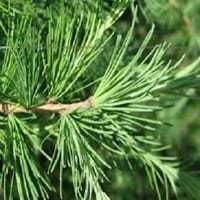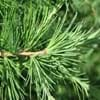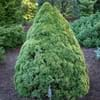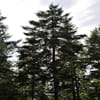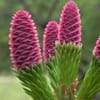Life Span
Perennial
Annual
Type
Needled or Scaled Evergreen
Herbs
Origin
Eastern Europe, Northern Europe, Russia/Siberia, Central Asia, Nepal, China
Europe, Asia
Types
not available
Admiral Pepper,Bell Pepper,Mohawk Pepper,Yolo Wonder Pepper
Number of Varieties
Not Available
Habitat
Cold Regions
Cropland, Oil fields, Waste areas
USDA Hardiness Zone
1-5
4-9
AHS Heat Zone
5-1
Not Available
Sunset Zone
A1, A2, A3, 1a, 1b, 2a, 2b
Not Available
Habit
Upright/Erect
Clump-Forming
Flower Color
Green, Red, Yellow
White
Flower Color Modifier
Bicolor
Not Available
Fruit Color
Brown, Yellow
Green, Tan
Leaf Color in Spring
Light Green
Green
Leaf Color in Summer
Light Green
Not Available
Leaf Color in Fall
Yellow
Green
Leaf Color in Winter
Not Available
Green
Leaf Shape
Needle like
Egg-shaped
Plant Season
Spring, Summer, Fall
Not Available
Sunlight
Full Sun, Partial Sun
Full Sun, Partial Sun
Growth Rate
Fast
Very Fast
Type of Soil
Clay, Loam, Sand
Clay, Loam, Sand
The pH of Soil
Acidic, Neutral, Alkaline
Acidic, Neutral, Alkaline
Soil Drainage
Average
Well drained
Bloom Time
Not Available
Early Spring, Spring, Late Spring, Late Fall, Early Winter, Winter, Late Winter
Tolerances
Drought
Pollution
Where to Plant?
Ground
Ground, Pot
How to Plant?
Seedlings
Stem Planting, Transplanting
Plant Maintenance
Medium
Medium
Watering Requirements
Keep the Soil well drained
Prefer drip-irrigation instead of Over-head watering, Water Deeply
In Summer
Lots of watering
Lots of watering
In Spring
Moderate
Moderate
In Winter
Average Water
Average Water
Soil pH
Acidic, Neutral, Alkaline
Acidic, Neutral, Alkaline
Soil Type
Clay, Loam, Sand
Clay, Loam, Sand
Soil Drainage Capacity
Average
Well drained
Sun Exposure
Full Sun, Partial Sun
Full Sun, Partial Sun
Pruning
Prune to control growth, Remove damaged leaves, Remove dead branches, Remove dead leaves
Prune ocassionally, Prune to control growth
Fertilizers
All-Purpose Liquid Fertilizer
All-Purpose Liquid Fertilizer
Pests and Diseases
Armillaria root rot, larch sawfly, Needle rust
Not Available
Plant Tolerance
Dry Conditions
Drought
Flowers
Insignificant
Insignificant
Flower Petal Number
Single
Single
Foliage Texture
Fine
Fine
Foliage Sheen
Matte
Not Available
Attracts
Rodents
Not Available
Allergy
Unknown
Not Available
Aesthetic Uses
Landscape Designing, Showy Purposes, Woodland margins
Not Used For Aesthetic Purpose
Beauty Benefits
Not Available
Not Available
Environmental Uses
Air purification
Air purification
Medicinal Uses
Unknown
Not Available
Part of Plant Used
Not Available
Not Available
Other Uses
Application in Furniture
Unknown
Used As Indoor Plant
No
No
Used As Outdoor Plant
Yes
Yes
Garden Design
Feature Plant
Not Available
Botanical Name
LARIX sibirica
CARDAMINE hirsuta
Common Name
Siberian Larch
Hairy Bittercress
In Hindi
Siberian Larch
बालों वाली Bittercress
In German
Sibirische Lärche
Hairy Bittercress
In French
Mélèze de Sibérie
Bittercress Poilu
In Spanish
Larix sibirica
Bittercress Peludo
In Greek
siberian larch
τριχωτές Bittercress
In Portuguese
siberian larch
Bittercress cabeludo
In Polish
Modrzew syberyjski
włochaty Bittercress
In Latin
Siberian larch
pilosus bittercress
Phylum
Pinophyta
Magnoliophyta
Class
Pinopsida
Magnoliopsida
Order
Pinales
Brassicales
Family
Pinaceae
Brassicaceae
Clade
Not Available
Not Available
Tribe
Not Available
Not Available
Subfamily
Not Applicable
Not Available
Number of Species
Not Available
Not Available
Difference Between Siberian Larch and Hairy Bittercress
If you are confused whether Siberian Larch or Hairy Bittercress are same, here are some features about those plants to help you choose better. Many people think that these two plants have the same characteristics, but one can see Siberian Larch and Hairy Bittercress Information and learn more about it. Fertilizers required for proper growth of Siberian Larch are All-Purpose Liquid Fertilizer, whereas for Hairy Bittercress fertilizers required are All-Purpose Liquid Fertilizer. Hence, one should know the basic difference between Siberian Larch and Hairy Bittercress if you are planning to have them in your garden to enhance its beauty.
<
Flowering PlantsImportance of Siberian Larch and Hairy Bittercress
Want to have the most appropriate plant for your garden? You might want to know the importance of Siberian Larch and Hairy Bittercress. Basically, these two plants vary in many aspects. Compare Siberian Larch and Hairy Bittercress as they differ in many characteristics such as their life, care, benefits, facts, etc. Every gardener must at least have the slightest clue about the plants he wants to plant in his garden. Compare their benefits, which differ in many ways like facts and uses. The medicinal use of Siberian Larch is Unknown whereas of Hairy Bittercress is Not Available. Siberian Larch has beauty benefits as follows: Not Available while Hairy Bittercress has beauty benefits as follows: Not Available.
Compare Facts of Siberian Larch vs Hairy Bittercress
How to choose the best garden plant for your garden depending upon its facts? Here garden plant comparison will help you to solve this query. Compare the facts of Siberian Larch vs Hairy Bittercress and know which one to choose. As garden plants have benefits and other uses, allergy is also a major drawback of plants for some people. Allergic reactions of Siberian Larch are Unknown whereas of Hairy Bittercress have Not Available respectively. Having a fruit bearing plant in your garden can be a plus point of your garden. Siberian Larch has showy fruits and Hairy Bittercress has no showy fruits. Also Siberian Larch is not flowering and Hairy Bittercress is not flowering . You can compare Siberian Larch and Hairy Bittercress facts and facts of other plants too.
